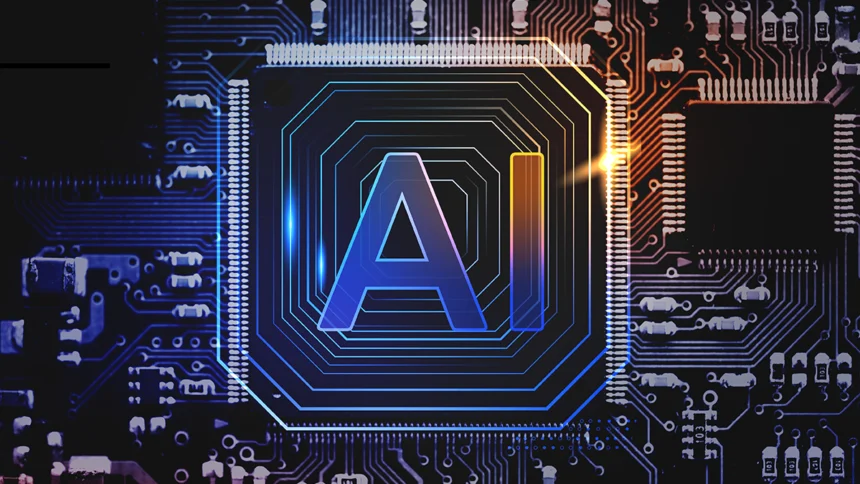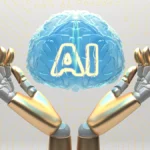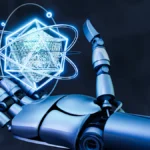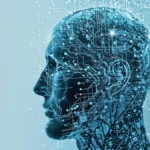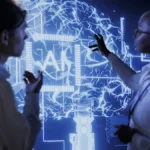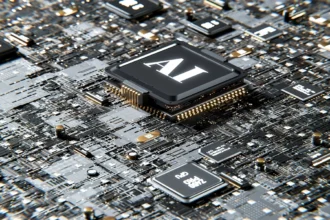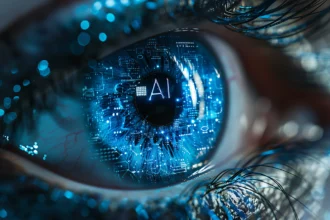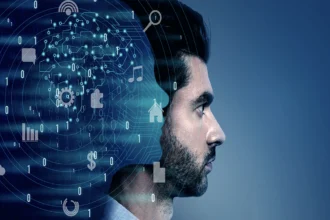Have you ever wondered if a machine could create a masterpiece? Can artificial intelligence (AI) possess creativity? These questions are no longer hypothetical. Welcome to a new creative era where AI is reshaping the world of art. This article delves into the profound impact of AI on art, exploring how AI art tools, AI creativity, and innovative technologies are revolutionizing artistic expression. Let’s embark on this fascinating journey and discover how AI is transforming the art landscape.
The Intersection of AI and Art
Artificial intelligence, once confined to the realms of science fiction, has now permeated various industries, including art. AI in art refers to the application of AI technologies to create, enhance, and critique artworks. This intersection of AI and art has given birth to a myriad of possibilities, pushing the boundaries of creativity and challenging traditional notions of what constitutes art.
AI Creativity: Beyond Human Imagination
AI’s ability to generate art is rooted in its capacity to analyze vast datasets, learn patterns, and produce novel outputs. Machine learning algorithms, particularly those involving neural networks, can mimic the human creative process to a remarkable degree. AI creativity doesn’t merely replicate existing styles; it often combines elements in unexpected ways, resulting in innovative and unique pieces.
AI Art Tools: Empowering Artists
AI art tools have become indispensable for modern artists. These tools range from generative adversarial networks (GANs) that create realistic images from scratch to deep learning models that enhance and modify existing artworks. Some popular AI art tools include:
- DeepArt.io: Transforms photos into artworks using AI-driven style transfer techniques.
- Runway ML: Provides a platform for artists to experiment with machine learning models.
- Artbreeder: Allows users to create and evolve images using collaborative AI.
- DALL-E: An AI model by OpenAI that generates images from textual descriptions.
These tools democratize art creation, making it accessible to anyone with a computer and an internet connection.
The Role of AI Artists
AI artists are not confined to human creators using AI tools. In some cases, AI itself is the artist. AI algorithms can independently create art, often surprising human observers with their ingenuity. For instance, the AI artist known as “Obvious” sold a portrait created by a neural network for $432,500 at a Christie’s auction. This landmark event highlighted the growing acceptance and value of AI-generated art in the traditional art market.
Art Innovation Through AI
AI’s impact on art extends beyond creation to innovation. Artists and technologists are collaborating to explore new artistic frontiers, leading to groundbreaking projects and exhibitions. Here are some notable examples:
- The Next Rembrandt: A project that used AI to analyze Rembrandt’s works and create a new painting in his style.
- Ai-Da: The world’s first AI-powered robot artist, capable of drawing and painting from live observations.
- Google DeepDream: An AI program that enhances images by overemphasizing patterns, creating dream-like visuals.
The Ethical Dimension of AI in Art
While AI offers exciting possibilities, it also raises ethical questions. Issues such as authorship, originality, and the potential for AI to replace human artists are hotly debated. Moreover, the use of AI in art can sometimes lead to the perpetuation of biases present in training data, necessitating careful oversight and ethical considerations.
FAQ: Navigating AI in Art
Can AI truly be creative?
Yes, AI can exhibit creativity by learning from vast datasets and generating novel outputs. While it may not possess subjective experiences, its ability to combine and innovate is a form of creativity.
How do AI art tools work?
AI art tools use machine learning algorithms to analyze and manipulate images. Techniques like style transfer, GANs, and deep learning enable these tools to create and enhance art.
Are AI-generated artworks considered original?v
This is a complex question. While AI-generated art can be unique, the originality debate often centers around the role of the algorithm’s designers and the data used for training.
Will AI replace human artists?
AI is unlikely to replace human artists but rather augment their capabilities. Human creativity, emotion, and cultural context are irreplaceable, and AI serves as a powerful tool in the artist’s arsenal.
The Future of AI in Art
The future of AI in art is promising and multifaceted. As AI technologies advance, we can expect even more sophisticated and nuanced artworks. Collaborative efforts between AI and human artists will likely lead to new genres and styles, further enriching the art world.
Embrace the AI-Art Revolution with USA trends
The intersection of AI and art marks a new creative era, full of potential and innovation. As we navigate this transformative landscape, staying informed and engaged is crucial. At USA trends, we provide the latest insights and resources on AI in art, creativity, jobs, internships, and more. Join our community through social media, push notifications, and newsletters to get instant updates and be part of the AI-art revolution.
Thank you for reading! Embrace the future of art with USA trends and unlock new possibilities in your creative journey.


